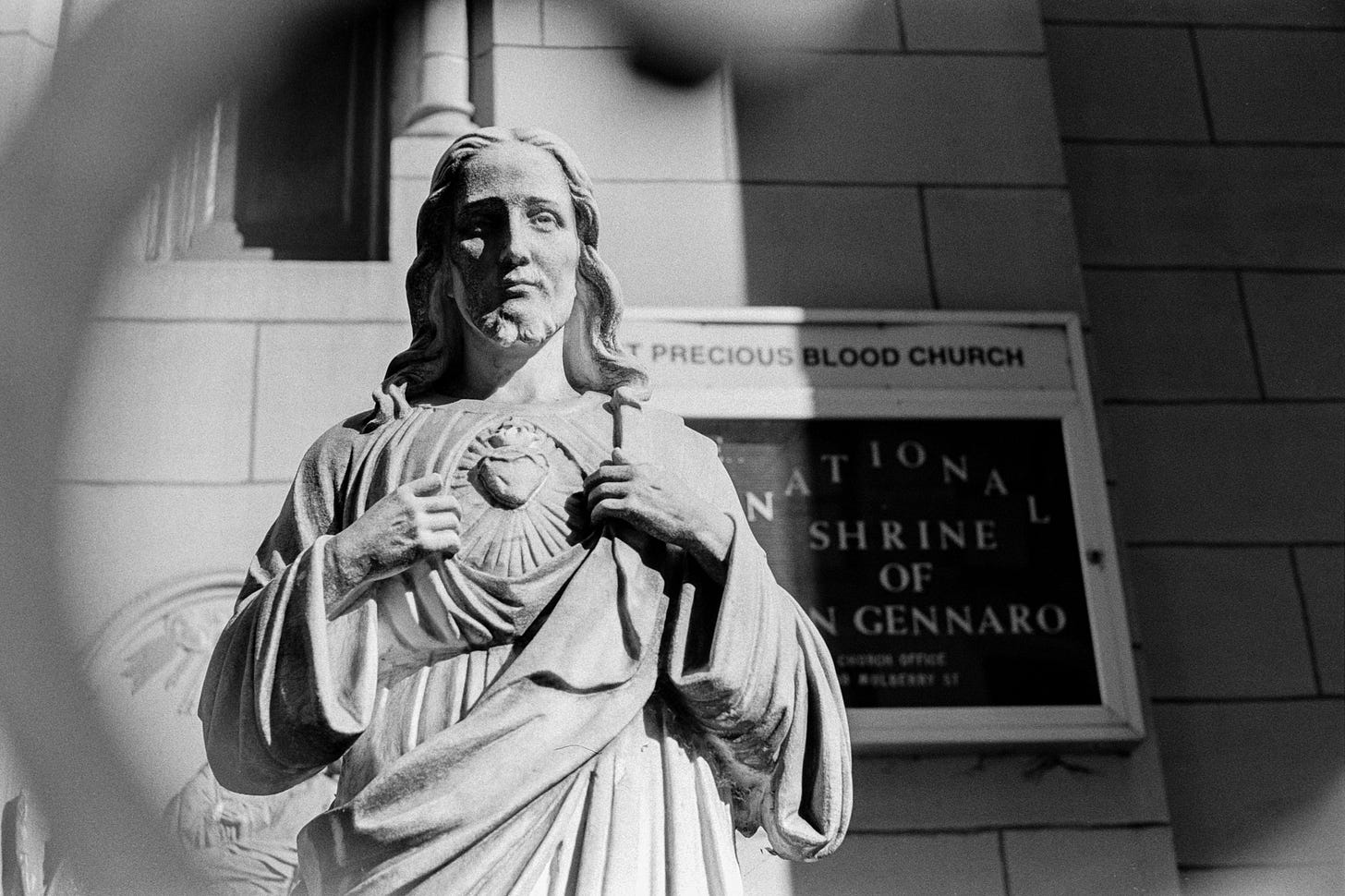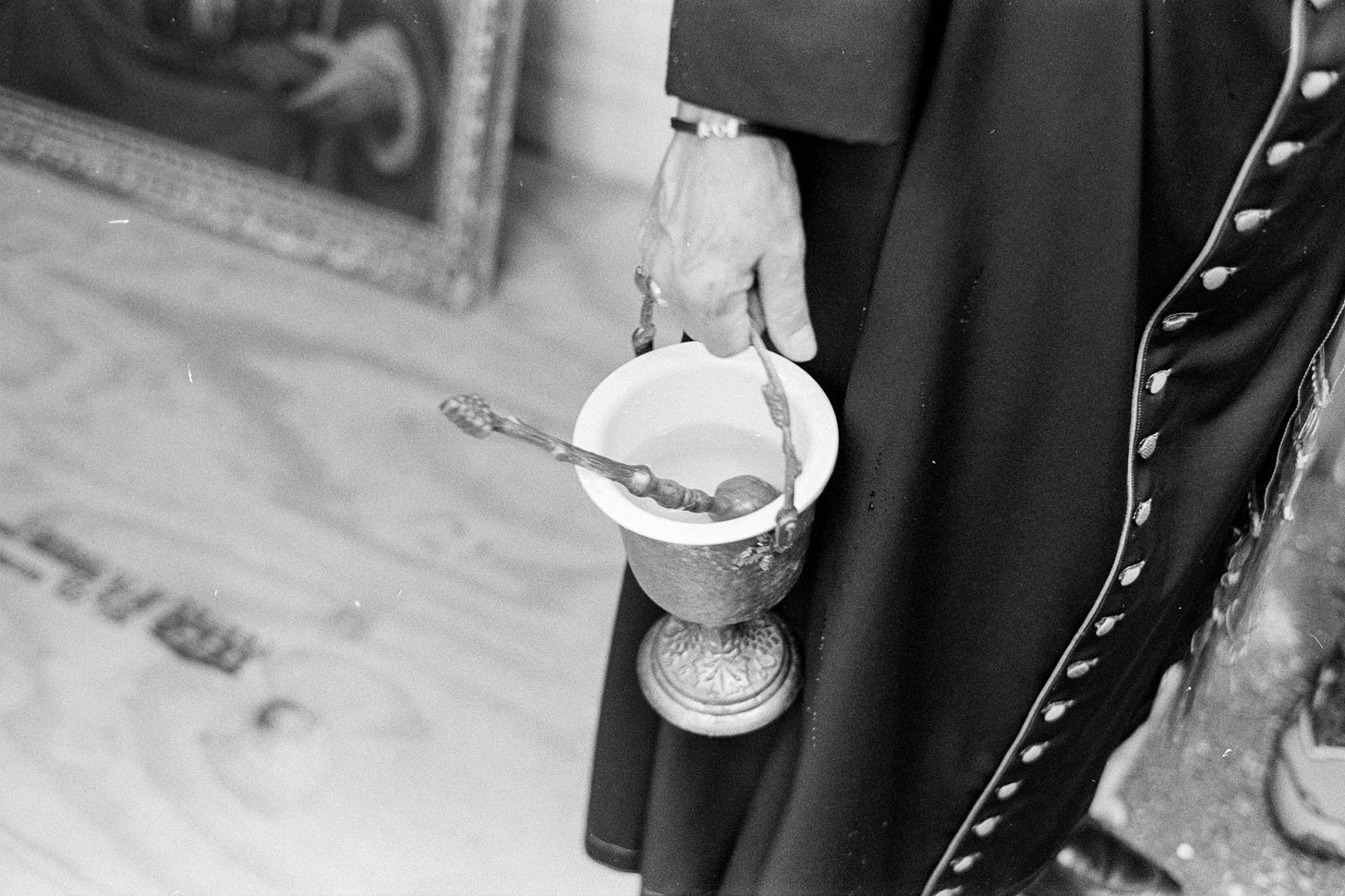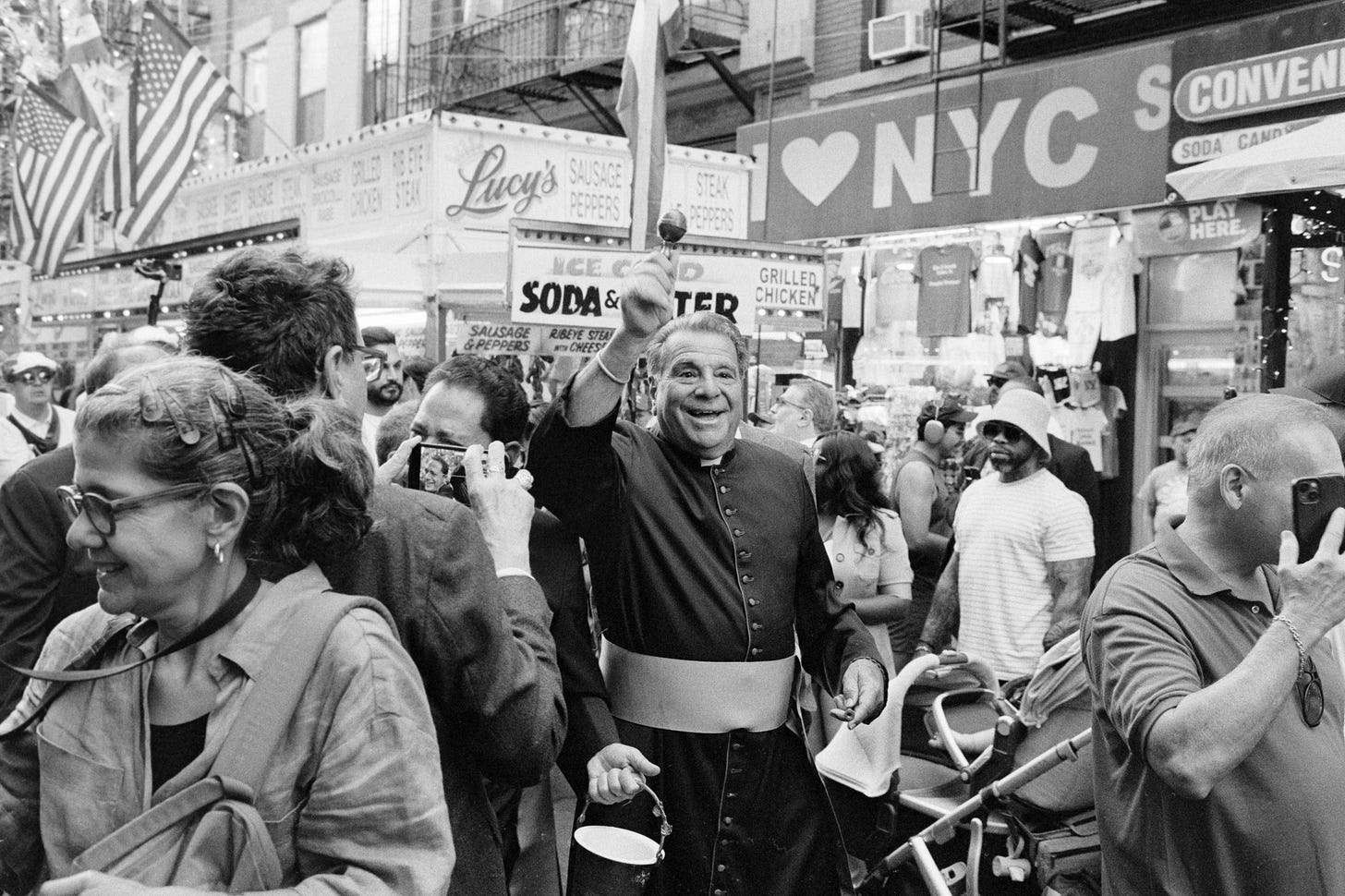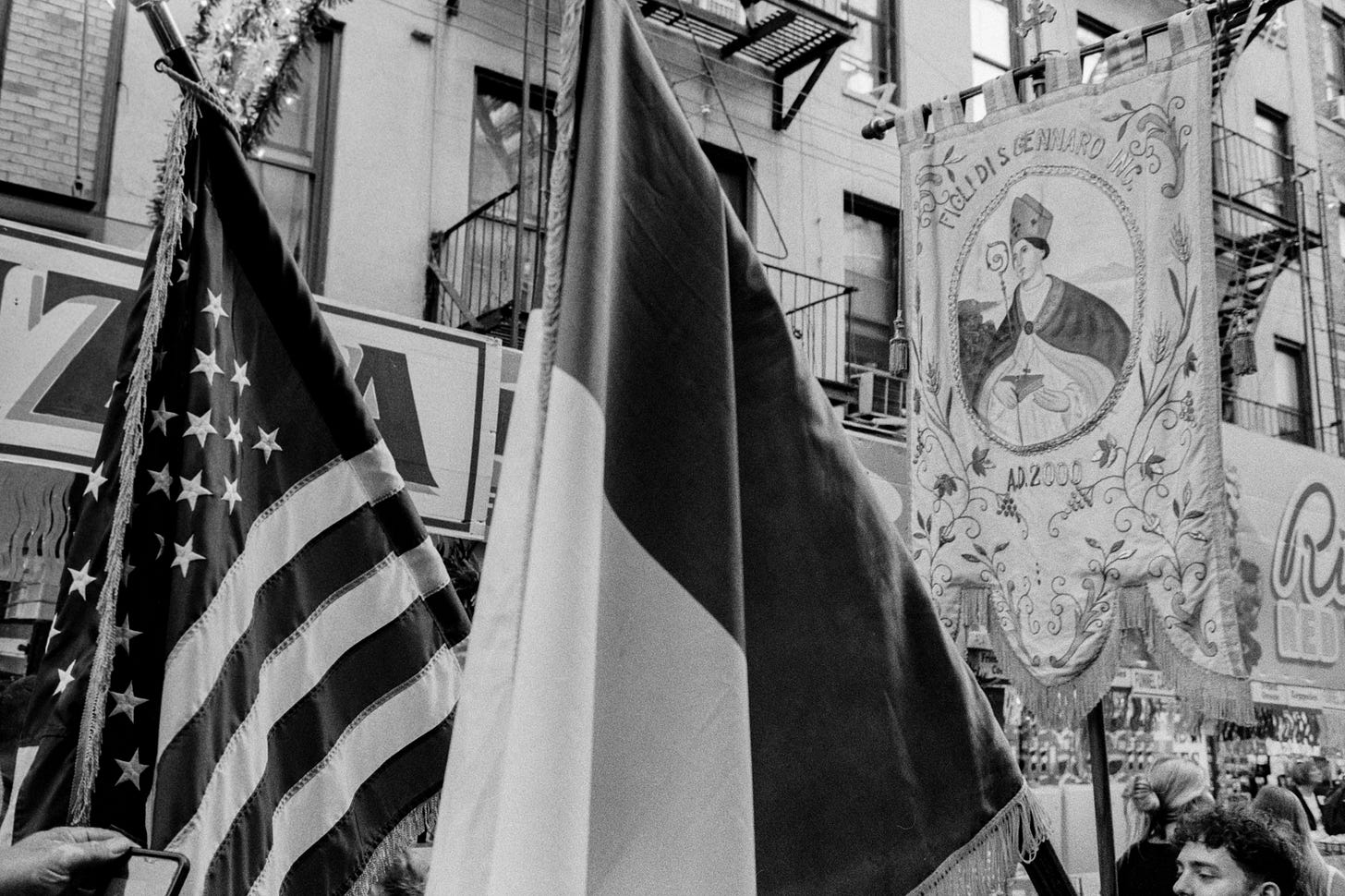Eat And Be Merry
Each year in the fall, Mulberry Street in lower Manhattan is transformed into a pedestrianized smorgasbord of food, drink and fun to pay homage to the patron saint of Naples and Little Italy, NY.
“The blood gushed due to the decapitation was collected and kept in an ampoule by Eusebia, who had been his wet nurse. In 313, the martyr's body was being moved to Naples, and the procession stopped to rest in what would be today's piazza Bernini, in the area known as Vomero. Eusebia put the vials containing the martyr's blood near his head, and the blood started to melt, at the presence of the local bishop.”
The mystical miracle of San Gennaro in Naples - Paolo Melissi
It’s early morning on Mulberry street, the heart of Little Italy in New York City. Usually at this time of day a few select coffee shops and bistros would be opening for business to meet the need of morning commuters. It’s the end of summer and the weather is still warm, but instead of the smell of coffee and the quiet hum of a city neighborhood waking, the air is filled with the smell of cooking meats and sauces. Food vendors have taken over the sidewalks on both sides of the street and as you walk between them, you can catch conversation about the days preparations, who’s coming to town for the festival and prayers for good weather. This is opening day of the 11-day Feast of San Gennaro. A day when locals, tourists and inquisitive photographers descend on the neighborhood to enjoy food and celebrate.
From the 1st century AD until the 4th century, the Roman Empire made persecution of Christians a priority. During the time period of the “Great Persecution” (aprox 303-312AD) houses of workshop were destroyed, propaganda was spread regarding those who practiced the faith. Priests and other openly devout believers were targeted for execution. In 305AD, the Bishop of Beneveneto, San Gennaro, became a martyr and was beheaded after he was arrested by a prison warden during a visit to other Christians in jail. He signed his own death warrant, was tortured and thrown into a furnace but by miracle survived unharmed. San Gennaro is considered the “Protector of The City” of Naples and ensures that the city is safe from the threat of a Mt Vesuvius eruption, earthquake, plague and drought.
As Italian immigrants left Europe to make a new life in America, many landed on the Island of Manhattan. As Little Italy grew, it was decided in 1926 to hold an 11-day festival to honor the patron saint of the city that so many of them had left behind. This became known as The Feast of San Gennaro. Many of the vendors here today have had a presence since 1926 and as the city, neighborhoods and its residents have changed, the feast is one yearly constant when Italian Americans from all over the country converge on this 11-block stretch of lower Manhattan to meet friends old and new, help with the family business, eat, drink and pay respects to their patron saint.
As we approach evening, crowds have built, festival goers are eating an drinking on the street. Family’s stop to let their kids play carnival games and the smell of cigars wafts through the air. There is a true sense of community and merriment as anticipation builds for the blessing of the stands. Monsignor David Cassato leads the precession of a statue depicting San Gennaro. It leaves from the Church Of The Most Precious Blood (and national shrine of San Gennaro) on Baxter Street and winds its way around to Mulberry where they begin there 11-block journey north. Every food stand and vendor is blessed with holy water and serenaded by the parade band. Festival goers buy pastries, ice-cream and cannoli for desert and as I decide its time to head back home to New Jersey, festivities are only just beginning.
The feast is a microcosm of America. 11-days where people of all backgrounds, faiths, races and ethnicities mingle in a community setting enjoying food, the last of the summer weather and each other’s company. I’ve always had a fondness for this particular part of NYC. Little Italy and the adjacent China town embody the immigrant spirit, grit and tenacity that make this country what it is. A fantastic melting pot where all you need is a dream and some will power and you truly can achieve anything. And, while I’m not of Italian or Chinese heritage, I find a unique connection to these neighborhoods because of my own journey to this country and my eventual citizenship. Sometimes, even after over 20 years of living in the US, I still occasionally have a unique sense of feeling somewhere between being an American and an “outsider”. I often find that wandering these streets help me feel more at peace with my place here.












